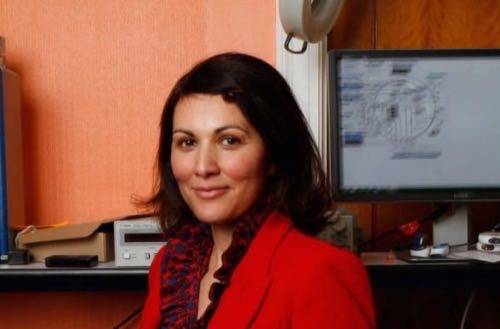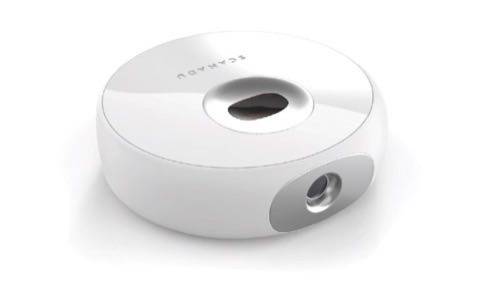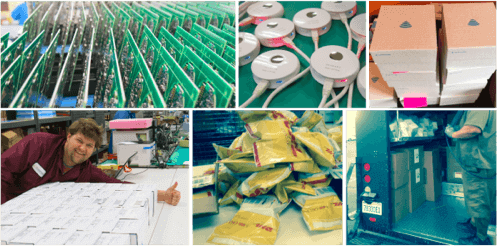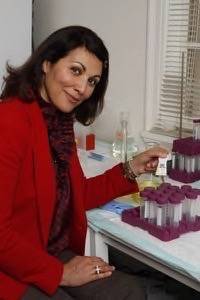
Wearable World Congress, ReadWrite’s signature annual conference in San Francisco on May 19-20, will feature the key players who are shaping wearable technology and the Internet of Things. This series profiles some of the experts who will be speaking at the conference.
Imagine this: You’re in the hospital, and your son is sick. His vitals are being recorded by various machines beeping and humming away. Your only way of understanding what’s happening is to wait for the doctor and nurses to make their way over to your room and interpret all of that data.
Without the medical staff, you’re clueless, and stuck with the sinking feeling that something is wrong, and you don’t know what.
Samia and Walter de Brouwer know that feeling all too well. In 2011, their son was hospitalized for a year. The experience inspired the couple to learn everything they could about medical data, so they could eliminate that feeling of helplessness.
Buy tickets now: Wearable World Congress, May 19-20
Inspired by medical technology seen on Star Trek, the couple founded a company called Scanadu and invented a new device that could easily read a person’s vital health information and relay it in easy-to-understand terms. In advance of “Sam” de Brouwer’s panel discussion on connected health at Wearable World Congress this month, I chatted with her about the company and its vision for connecting patients to medical information.
A Dose Of Inspiration
Taking a cue from the tricorder on Star Trek, Scanadu created the Scout, a small, sensor-laden disc that connects to a user’s smartphone via Bluetooth.

After being held up to a person’s temple, the Scout can record and transmit useful biometric data that can be understood by anyone, regardless of whether or not they have a medical degree. Armed with knowledge, users can decide what to do next.
Scanadu took to crowdfunding site Indiegogo in 2013, raising more than $1.66 million in pledges. Now the company is in the process of fulfilling those order, sending units to 8,500 backers. Having completed two funding rounds, for a collective $45.5 million, de Brouwers are now working on U.S. Food And Drug Administration approval to use Scout and its urinalysis device, Scanaflo, for medical use.

Sam and Walter have experience taking on heady causes. They were instrumental in creating Europe’s “One Laptop Per Child Foundation,” with Sam serving as its Advocacy Director. She was also the Director of the National Institute for Teleworkers in Belgium, a member of MIT’s MediaLab’s Starlab team, and founder of Jobscape, one of the first online recruitment companies in Brussels. In addition to her work at Scanadu, she also serves as Director of TEDxBrussels.
Solving problems with technology is nothing new for Sam. But when I spoke with her, it became clear that her company’s not just a business. It’s also personal.
How did you come up with the concept for Scanadu?
My husband and I co-founded the company in 2011 after spending a year in the hospital with our son. During this time, we were completely in the dark about medicine, and felt such a sense of powerlessness. To cope with this frustration, Walter began to log the numbers on the machines and teach himself what certain patterns meant. Once we understood the data, we were able to have better and more informed conversations with the doctors.
Our goal is to make this the last generation to know so little about our health. By empowering people with information about their own bodies, we believe we can bridge the gap of information between the medical community and the people.
Tell me about the process of taking Scout from idea to reality. What was that like?
We set out to create a device inspired by the medical tricorder once imagined in Star Trek. We set up our labs at NASA-Ames Research Center in 2011, unveiled our first prototype of the Scanadu Scout in late 2012, and during the summer of 2013 we held a record-breaking Indiegogo campaign.
No one has ever done what we’re doing. This is the first time someone has been able to deliver blood pressure readings without a cuff, or SP02 readings without a clip. To bring this device to reality our team had to find a way to create a seamless fusion of both hardware and software—a combination of sensors, data and complex algorithms that all work together to deliver results right on your smartphone. It has not been an easy path, but we’re so proud of what our team has accomplished.

We are currently delivering the Scanadu Scout investigational devices to our Indiegogo backers. Feedback from these backers is a valuable part of our usability study, which will help us develop a final Scanadu Scout to submit for FDA clearance.
What is your ultimate goal for the company and the Scanadu Scout? When will the device launch in the retail market?
[Scout and] Scanadu’s family of consumer medical tools can help people understand their personal health like never before, to not only improve conversations with our doctors, but take the fear out of medicine.
The FDA process is very in-depth, but we’re committed to meeting the gold standard set by the FDA to ensure the device is accurate, universally accepted and trusted among both consumers and the medical community. We hope to be in market as soon as possible.
To hear more from Sam de Brouwer and other innovators and experts, register for Wearable World Congress 2015, May 19-20 in San Francisco.
Photos courtesy of Sam de Brouwer and Scanadu










